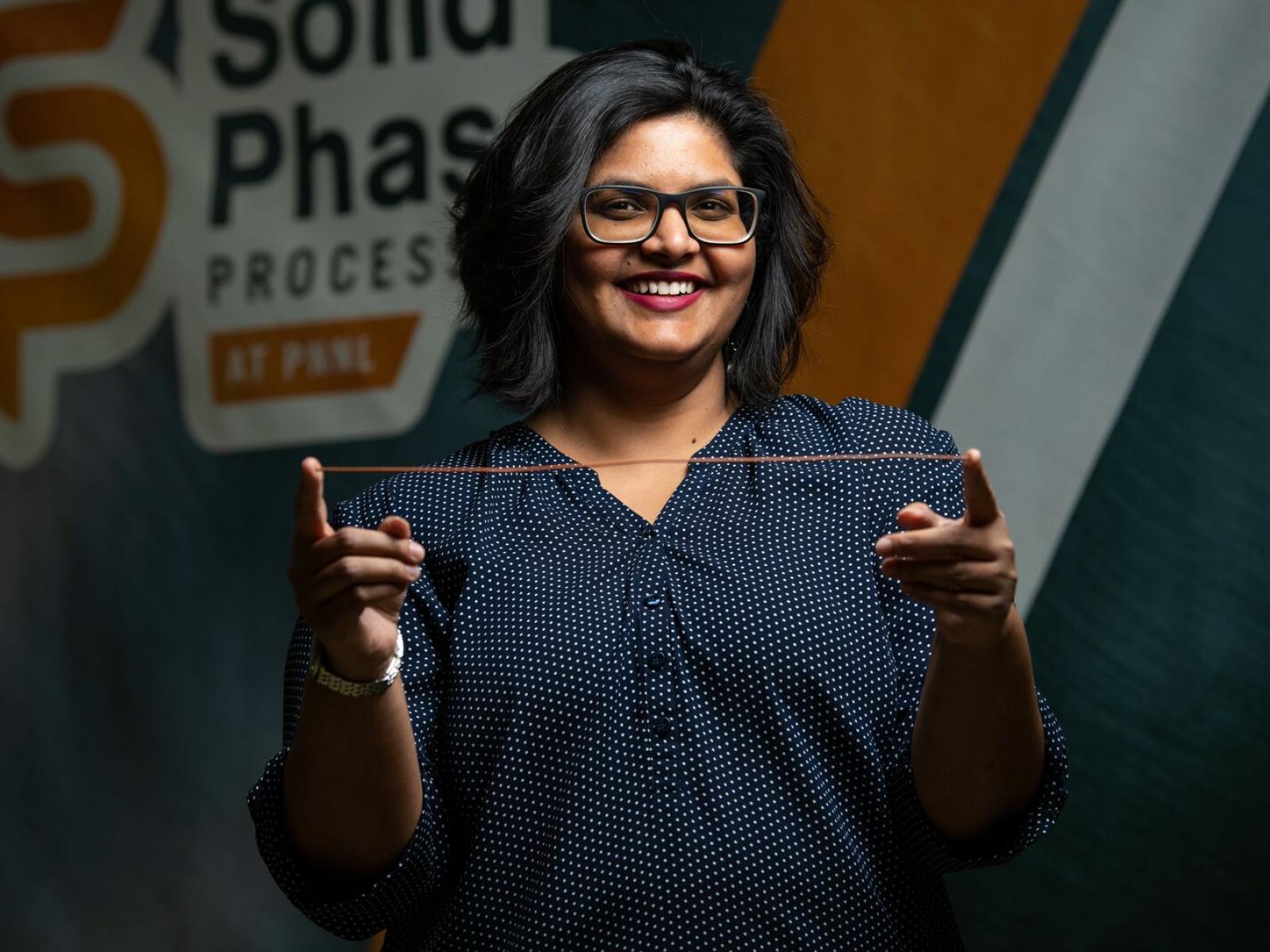The laboratory teamed with General Motors to test out the souped-up copper wire for use in vehicle motor components. As part of a cost-shared research project, the team validated the increased conductivity and found that it also has higher ductility—the ability to stretch farther before it breaks. In other physical properties, it behaved just like regular copper so it can be welded and subjected to other mechanical stresses with no degradation of performance. This means that no specialized manufacturing methods are necessary to assemble motors—only the new advanced PNNL copper composite.
The technology can apply to any industry that uses copper to move electrical energy, including power transmission, electronics, wireless chargers, electric motors, generators, under-sea cables, and batteries.
Using a new, patented and patent pending manufacturing platform developed at PNNL researchers added graphene—a highly conductive, nano-thin sheet of carbon atoms—to copper and produced wire. The increase in conductivity compared to pure copper is made possible by a first-of-its-kind machine that combines and extrudes metal and composite materials, including copper.
Shear inspiration
PNNL’s ShAPE™ process can improve the performance of materials extruded through the process. ShAPE™ stands for Shear Assisted Processing and Extrusion. Oppositional, or shear, force is applied by rotating a metal or composite as it is pushed through a die to create a new form. This novel, energy efficient approach creates internal heating by deforming the metal, which softens it and allows it to form into wires, tubes, and bars.
“ShAPE is the first process that has achieved improved conductivity in copper at the bulk scale, meaning it can produce materials in a size and format that industry currently uses, like wires and bars,” said Glenn Grant, principal investigator. “The benefit of adding graphene to copper has been investigated before, but these efforts have primarily focused on thin films or layered structures that are extremely costly and time consuming to make. The ShAPE process is the first demonstration of considerable conductivity improvement in a copper-graphene composites made by a truly scalable process.”
The charge: high-conductivity metals for electric vehicles
According to a 2018 U.S. Department of Energy report on electric vehicles, there is a need for improved motor efficiency to increase power density for electric vehicles. Additionally, components need to fit within increasingly smaller spaces available in the vehicle. But reducing motor volume is limited by the materials used in current electric vehicles and electrical conductivity limitations of copper windings.
Adding graphene to copper has proved difficult because the additives do not blend uniformly, creating clumps and pore spaces within the structure. But the ShAPE process eliminates pore spaces while also distributing the additives within the metal uniformly, which may be the reason for improved electrical conductivity.
“ShAPE’s uniform dispersion of the graphene is the reason only really tiny amounts of additive are needed—about 6 parts per million of graphene flakes—to get a substantial improvement of 5 percent in conductivity,” said PNNL material scientist Keerti Kappagantula. “Other methods require large quantities of graphene, which is very expensive to make, and still have not approached the high conductivity we’ve demonstrated at a bulk scale.”
General Motors Research and Development engineers verified the higher conductivity copper wire can be welded, brazed, and formed in exactly the same way as conventional copper wire. This indicates seamless integration with existing motor manufacturing processes.
“To further lightweight motors, advances in materials is the new paradigm,” said Darrell Herling of PNNL’s Energy Processes and Materials Division. “Higher conductivity copper could be a disruptive approach to lightweighting and/or increasing efficiency for any electric motor or wireless vehicle charging system.”
ShAPE™ is part of PNNL’s suite of solid phase processing solutions for industry. PNNL is interested in collaborating with partners to develop and demonstrate the ShAPE™ technology for additional applications of high conductivity metals. The technology is available for licensing and collaboration opportunities. For more information, contact Sara Hunt, PNNL technology commercialization manager.




